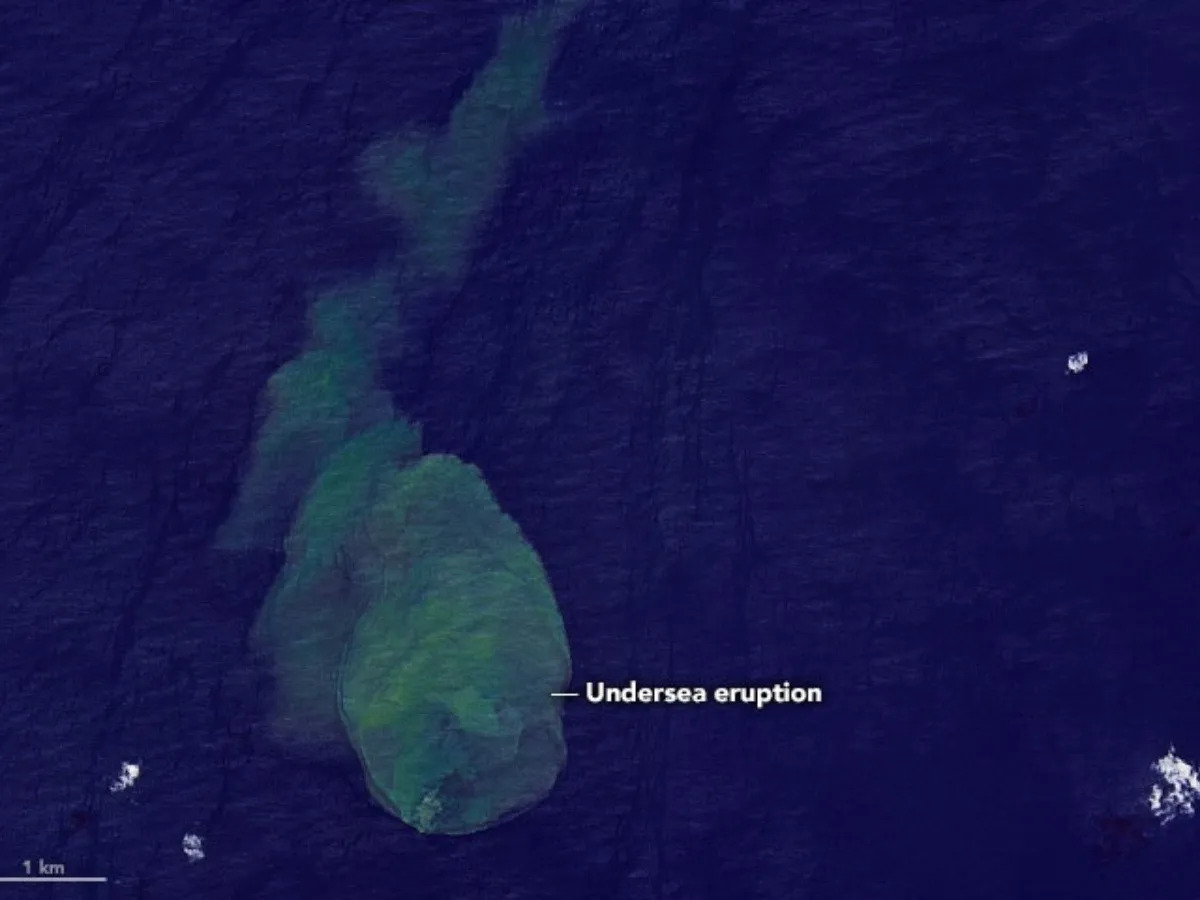'Sharkcano' undersea volcano eruption spotted from space in satellite photo
Sharks and microbes thrive amid these acidic waters.

Superheated, acidic water surrounds an underwater volcano dubbed "sharkcano" in fresh imagery from the Landsat 9 satellite.
Discolored water is visible from space in the zone around Kavachi Volcano in the Solomon Islands, a Pacific island nation east of Papua New Guinea, in an image recently featured on NASA's Earth Observatory website.
Its unusual moniker, "sharkcano," is a nod to the Solomon Islands' two species of sharks, according to NASA's Goddard Space Flight Center. The sharks appear quite tolerant to the acidic conditions, given that Kavachi is "one of the most active submarine volcanoes in the Pacific," as Goddard tweeted Sunday (May 22).
Related: Explosive underwater volcano eruption in Tonga spotted from space in satellite images
Kavachi is amid a tectonically active region, and nearby a subduction zone about 18 miles (30 kilometers) to the southwest, NASA's Earth Observatory said on May 14. The volcano's lavas can range from basaltic (magnesium and iron rich) to the more silica-rich andesitic.
Yet there is a lot of life present even amid the harsh conditions.
"Superheated, acidic water usually contain particulate matter, volcanic rock fragments, and sulfur," NASA's Earth Observatory added. "A 2015 scientific expedition to the volcano found two species of sharks, including hammerheads, living in the submerged crater. The researchers also found microbial communities that thrive on sulfur."
Breaking space news, the latest updates on rocket launches, skywatching events and more!
The volcano has been in nearly continuous eruption since its first recorded activity in 1939 and is known for creating temporary islands of debris that get washed away by the ocean. Residents nearby often see steam and ash, NASA said.
"The island is named for a sea god of the Gatokae and Vangunu peoples, and it is sometimes also referred to as Rejo te Kvachi, or 'Kavachi’s Oven'," the agency said.
Follow Elizabeth Howell on Twitter @howellspace. Follow us on Twitter @Spacedotcom or Facebook.

Elizabeth Howell (she/her), Ph.D., was a staff writer in the spaceflight channel between 2022 and 2024 specializing in Canadian space news. She was contributing writer for Space.com for 10 years from 2012 to 2024. Elizabeth's reporting includes multiple exclusives with the White House, leading world coverage about a lost-and-found space tomato on the International Space Station, witnessing five human spaceflight launches on two continents, flying parabolic, working inside a spacesuit, and participating in a simulated Mars mission. Her latest book, "Why Am I Taller?" (ECW Press, 2022) is co-written with astronaut Dave Williams.
